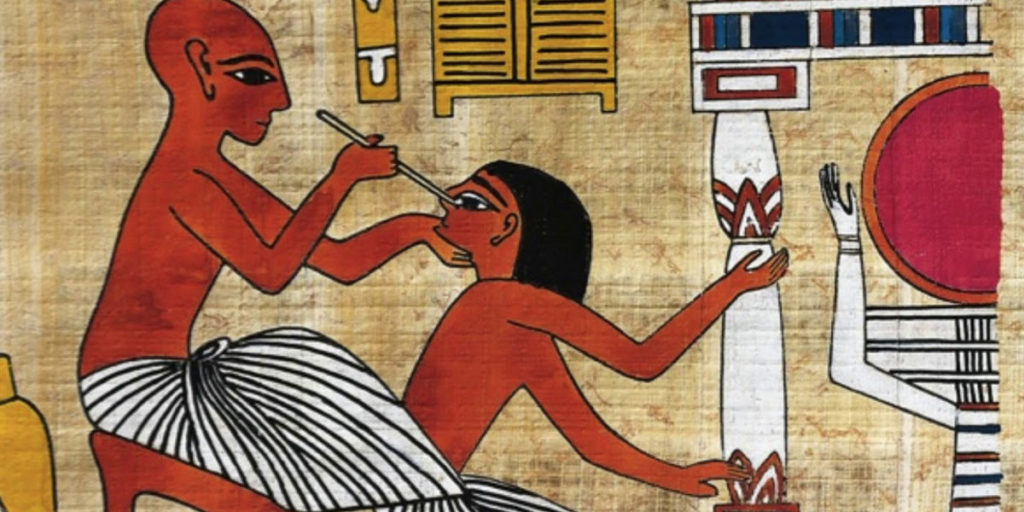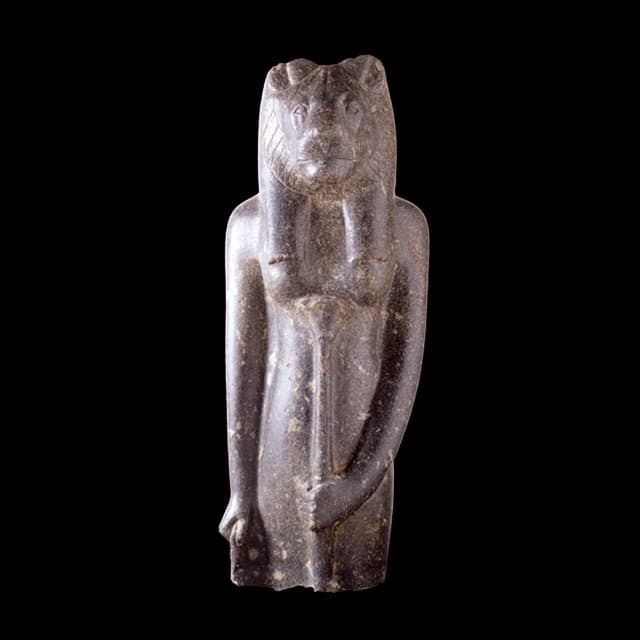Thoth is the Greek name for the ancient Egyptian god Djehuty. Most often depicted as a man with the head of an ibis, he was also sometimes shown as a baboon.
The ibis-headed man was often shown with the moon on his head in the form of the lunar disc resting atop a crescent moon. At times he wore the double crown of Upper and Lower Egypt or the Ates crown of Osiris. He often held an ankh, the symbol of life.
At times, he acted as the voice of Ra and carried the Eye of Ra, symbolizing the power of the sun.
This god was revered as a source of knowledge and reason, having revealed to the ancient Egyptians the secrets of written language and geometry. He was also associated with astronomy, art, and science (which was often indistinguishable from magic in ancient Egyptian culture).
In addition to the ibis and the baboon, symbols for Thoth included the moon disk, papyrus scroll, stylus, reed pens, writing palette, and scales. It is thought that the ibis came to symbolize Thoth because its beak resembles the crescent moon.
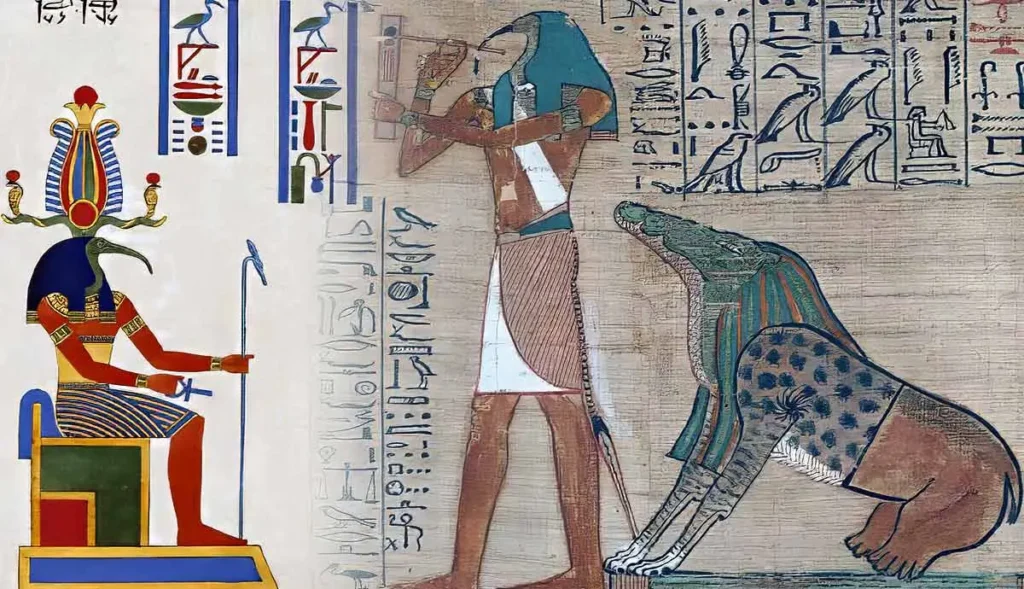
The Many Roles of Thoth
Thoth was so ancient that he had no mother or father. He begot himself and emerged from the nothingness. Some said that he created the stars themselves along with the Earth and the moon, willing creation into being and setting the divine rules that control the heavens.
In his most basic form, Thoth was a moon god. The moon provides light through the darkness and allows people to track the days and months of the year. And so Thoth became associated with knowledge, wisdom, magic, measurement, and regulation. He was sometimes credited with the invention of music as well.
In some eras of Egyptian history, Thoth was said to have created Ra himself. In the form of an ibis, he laid the egg from which the sun god hatched. In other stories, his song brought the other old gods into existence through the power of language.
According to his priests, Thoth was the original author of every sacred text. He was also credited with the creation of the Egyptian lunar calendar.
Legend held that Thoth added an extra five days to a year that originally held only three hundred and sixty. The goddess Nut was unable to have children until Thoth’s bet with the Moon afforded creation an extra five days of light. In those five days, Nut gave birth to Isis, Osiris, Set, and Nephthys.
In the Osiris myth in which the god is murdered by his brother Set and restored by Isis, Thoth gave Isis the magic words that would restore her husband for long enough for her to conceive a son.
This thereby ensured the creation of the god Horus. When Horus fought with Set, Thoth restored Horus’s left eye (which symbolized the moon).
The scribe of the gods, Thoth was said to have invented both ancient Egyptian hieroglyphics and later forms of writing. He was often shown holding a writing palette and stylus.
The Judgement of Thoth
Thoth was also associated with judgment, including the arbitration of disputes between gods. He also appears as a wise counselor and persuasive orator, two qualities held in exceptionally high regard in ancient Egypt.
In the underworld, Thoth took the form of a dog-headed ape called Aani. He was a paragon of wisdom who played a role in judging the dead before they moved on to their next life.
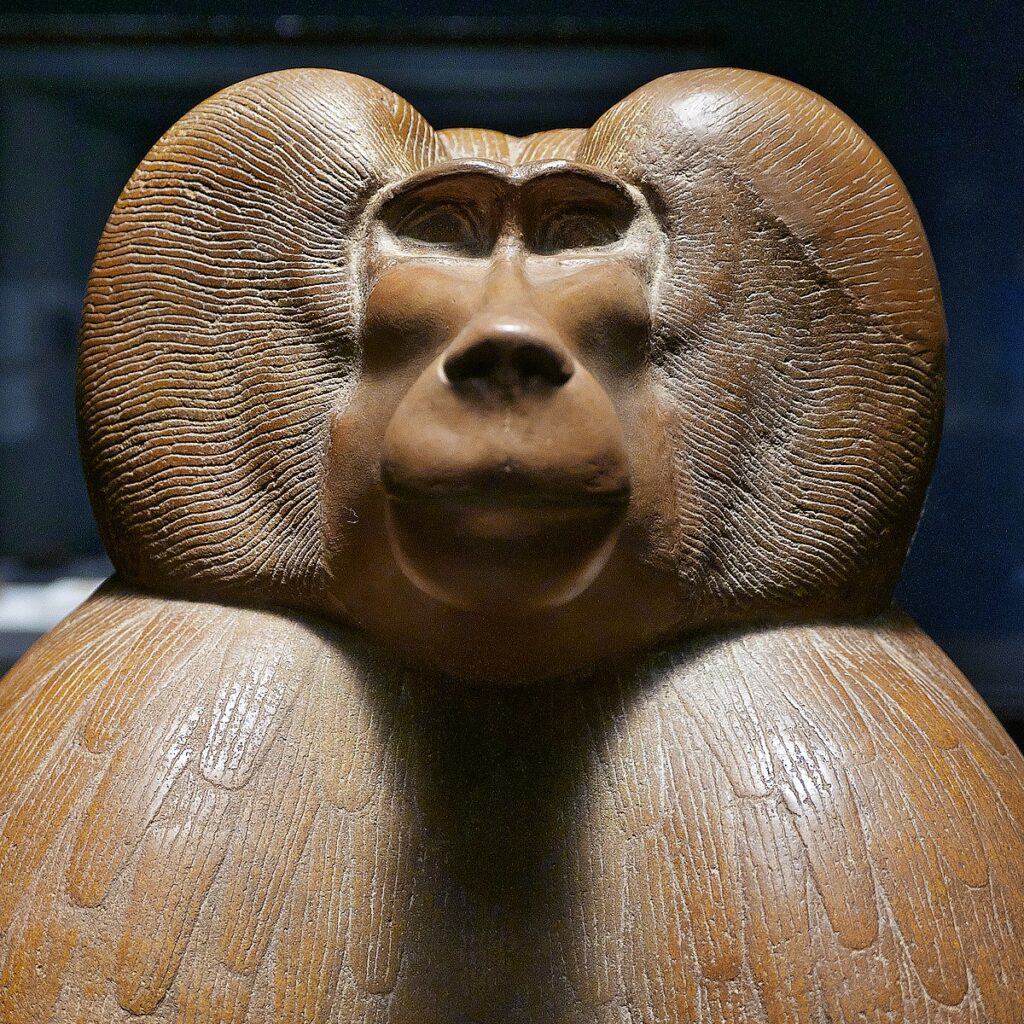
Thoth examined the scales when the heart of the deceased was weighed against a feather. If the scales were balanced, he recorded their name and they would be admitted to paradise. If their heart was heavy with sin, then it would be devoured, and the deceased would cease to exist.
When their heart was being weighed, the human being judged would stand before the gods and proclaim the sins they had not committed. Examples from ancient texts include:
- I have not stolen.
- I have not slain men or women.
- I have not told lies.
- I have not destroyed grain.
- I have brought no lawsuits.
- I have not been neglectful of truthful words.
- I have not cursed.
- I have not bragged.
- I have not been violent.
- I have not had intercourse with a married woman.
Thoth also ruled over the Land of Caves in the underworld, where he kept records of mortal transgressions and assigned punishments for their sins.
Thoth appeared in many ancient stories in the role of wise counselor. He was often connected with Seshat, the ancient Egyptian goddess of writing and wisdom. Most often, however, Thoth was paired with Maat.
Thoth and Maat
Thoth’s consort was Maat, the daughter of Ra and Hathor. She represented truth, justice, balance, harmony, morality, order, and law. She was often shown with wings on her arms and/or with an ostrich feather on her head.
Maat predates Thoth. She is mentioned in the Pyramid Texts of Unas, the oldest ancient Egyptian funerary texts ever found. They were written between 2375 and 2345 BC.
Thoth and Maat served as secretary and counselor to the sun god Ra. They accompanied Ra on his solar barque as he rode through the sky each day, bringing light to the world.
Maat represents order. In later traditions, when she was said to be the daughter of Ra, the sun god installed her in place of the chaos that had reigned before.
It was the job of each pharaoh to keep Maat in place, holding chaos at bay and maintaining order. Some pharaohs adopted the title Lord of Maat or Meri-Maat, meaning Beloved of Maat.
Maat was the owner of the feather used in the weighing of the heart ceremony that every Egyptian must pass through between this life and the next. In some versions, she was the feather.
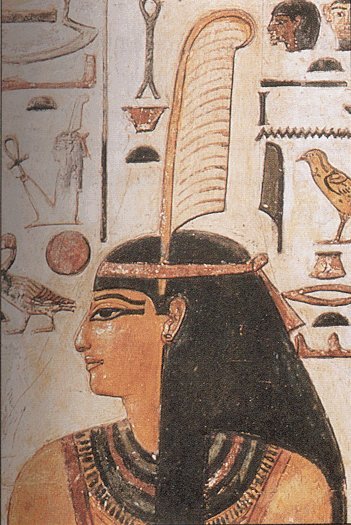
She was the paragon of morality that Egyptians sought to emulate. Truth and honor were held in high regard.
Egyptians were expected to uphold those values in their interactions with others and with the natural world as well. She was associated with honesty, good faith, and righteousness.
She was also associated with the daily practice of law, and the vizier who oversaw all legal proceedings was called the Priest of Maat. Egyptian law gave women significant power, such as the legal capacity to own land independently of any male relatives or other men.
Like Thoth, Maat was also associated with the order that governs the heavens, the cycle of the seasons, religious observations, and balance itself.
One ancient text preached:
Be generous as long as you live
What leaves the storehouse does not return;
It is the food to be shared which is coveted,
One whose belly is empty is an accuser;
One deprived becomes an opponent,
Don’t have him for a neighbor.
Kindness is a man’s memorial
For the years after the function.
Maat became a concept that transcended the personification of the goddess. To do Maat meant to do what was to do good, or to act in a manner that was above reproach. It was also to practice balance, both in life and in rhetorical arguments.
Sesh
Thoth was the favorite god of scribes, who often had a picture of him in their workspace. The hymns sung in praise of this god warned scribes that he oversaw their work and would frown upon them if they slacked.
Scribes held prestigious positions in ancient Egyptian society. They maintained tax records, recorded petitions, and facilitated communication across vast distances.
Both Thoth and Maat influenced the creation of the sesh, an intellectual class that often held bureaucratic roles. They debated and maintained the moral principles set forth by Maat.
Systematic schools for scribes became common in the Middle Kingdom Era (2060 to 1700 BC).
Students as young as five sometimes enrolled, though they might also start closer to age ten. The boys – and a few girls! – who attended these schools studied two types of writing: sacred writing that focused on Maat and morality, and instructive writing that focused on bureaucracy.
Following four years of instruction, they became apprentices.
Hermopolis
The main temple for Thoth / Djehuty was located in Hermopolis, an ancient Egyptian city known as Khemenu by its early residents. Because they associated Djehuty with the god Hermes, the Greeks named the place Hermopolis.
Located between Upper and Lower Egypt, Khemenu was a major city and provincial capital during the Old Kingdom (2700 – 2200 BC). The cult of Thoth became particularly prominent during the Late Period, (666 – 300 BC) and millions of ibis birds were mummified in honor of the god.
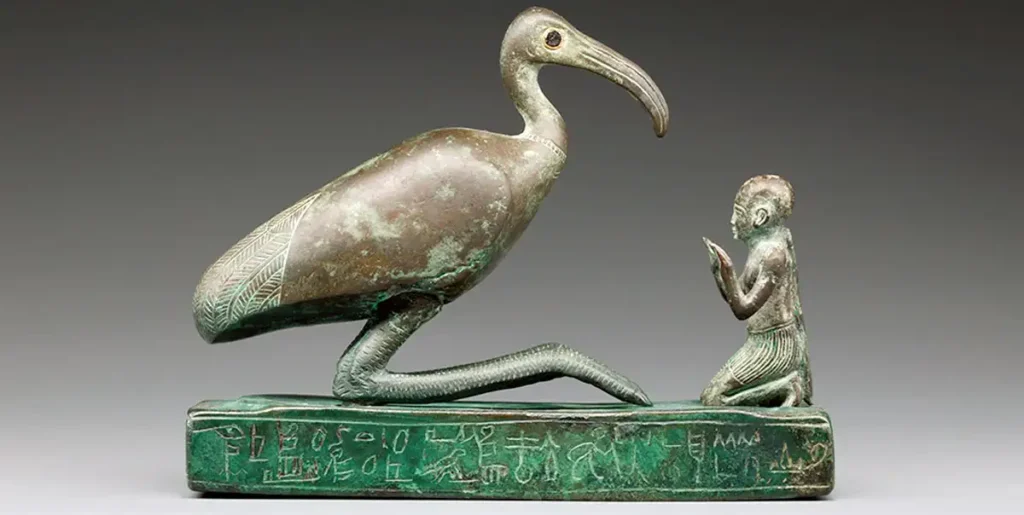
By this time, Maat had faded and Thoth’s consort was Nehmauit, the goddess of protection.
At its height, Khemenu was an opulent resort town. Passing riverboats paid tolls, enriching the centrally located city. The Ptolemies expanded the Temple of Thoth to grand proportions with stone pillars painted vibrant primary colors, but it was reduced to ruins in later centuries.
Hermopolis remained a significant location through Roman times. By the third century of the common era, the city boasted multiple seven-story buildings.
The city was abandoned during the Muslim Conquest of Egypt in the seventh century. What little remained of the temple of Thoth was demolished and used as the foundation of a sugar factory in the eighteenth century.
References
https://www.crystalinks.com/thoth.html
https://egyptianmuseum.org/deities-thoth
https://www.worldhistory.org/Thoth/
https://www.huntmuseum.com/stories/objects-in-focus/thoth-baboon-and-ibis-god-of-the-moon/
